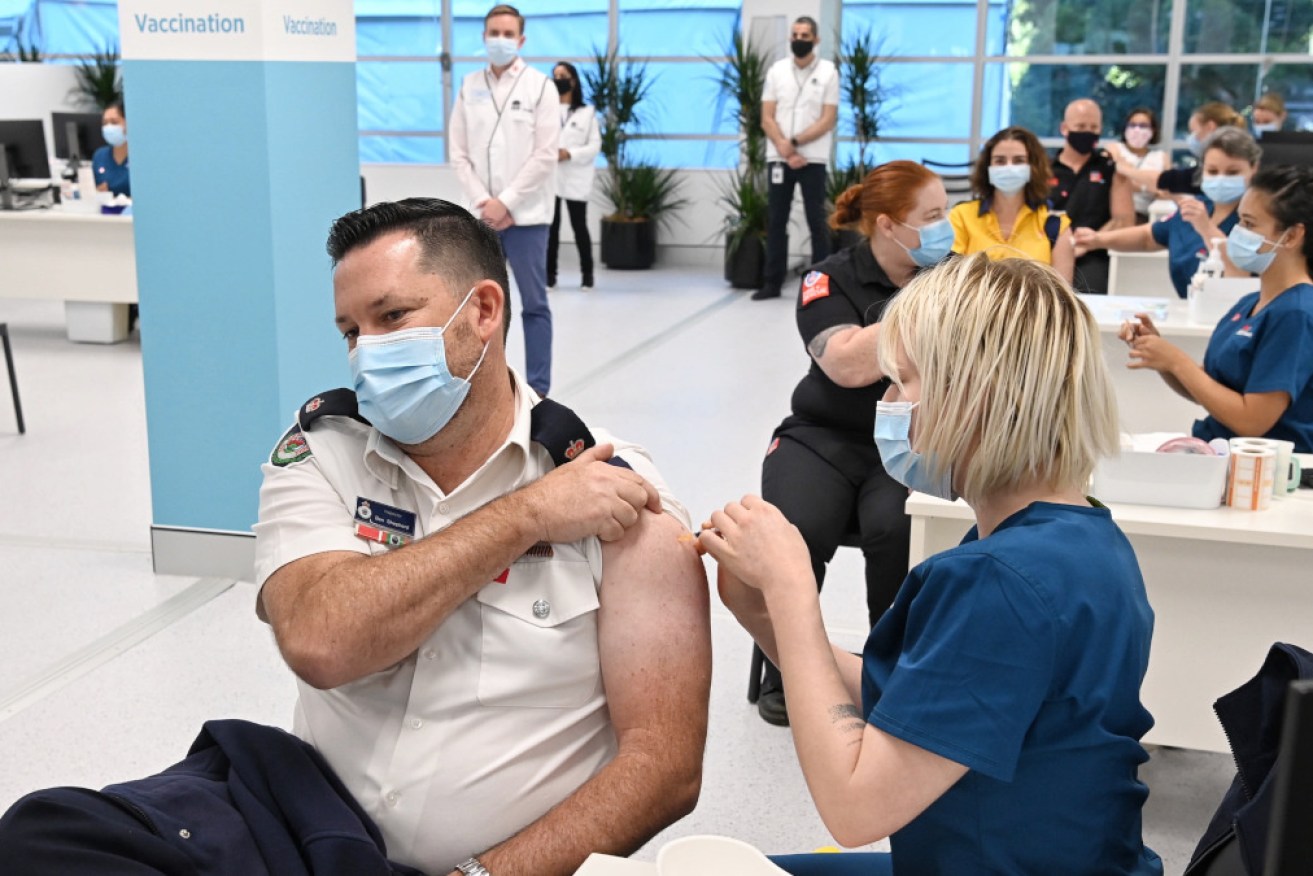The path to exiting the pandemic is paved with vaccinations

Lockdown – with all its associated pain – of the state most reluctant to do it is the clearest demonstration yet of the power of COVID zero.
Intolerance for any community transmission of COVID-19 has been key to Australia’s extraordinary health, economic and social success.
Assuming this latest outbreak can once again be overcome (which is not a given), a key question is when we will no longer worry so much if the virus escapes into the community.
Feeling safe to exit COVID zero by choice is the best pandemic end game we can hope for. What do we need to get to that point?
We are learning fast that vaccine does not mean vaccination.
Vaccine access/delivery, hesitancy, and global access remain huge obstacles to Australia – and the wider world’s – pandemic exit plan.
It serves little purpose for now to look in the rear-view mirror. We are where we are with vaccination.
Vaccination will be the end of the pandemic
We have a large, secure supply of AstraZeneca vaccine; some (but not enough) Pfizer, with much more by September.
Two other excellent vaccines are also on the way: Novavax and Moderna.
About 24 per cent of Australians have received one dose of AstraZeneca or Pfizer vaccines, and 4 per cent have received their second dose.
We are clearly a long way from high vaccine coverage – in part because of the gaps between doses, and a slow vaccine take-up from individuals.
While one dose offers partial protection (and is vastly better than no vaccine at all), real-world data from the UK and US show that two doses of either vaccine are remarkably effective at preventing severe COVID-19 disease, hospitalisation and death – even against the Delta variant.
So, if you are eligible, beat the door down to get decent advice and receive your first dose and don’t hesitate for a moment to receive your second dose of either vaccine.
Clearly the safety concerns about the only vaccine that we currently have in abundance, locally produced AstraZeneca, has greatly and understandably affected Australia’s rollout.
While the blood-clot risks are rare, they are more common in younger adults, the very group less impacted by severe COVID-19.
In a COVID-zero environment and with alternative vaccines on the way, the recommendation to use AstraZeneca for those older than 60 was understandable.
But the past few days has underscored just how tenuous COVID zero is, especially with newer, vastly more transmissible variants and a leaky, inexcusably not airborne-ready, hotel quarantine system standing between zero and community spread.
Given we are still some way off large amounts of vaccines, our attitude to AstraZeneca needs a rethink.
Reduce the fear, increase the take-up
A recent line from Tim Soutphommasane and Marc Stears summed up the situation well: ‘We have to learn to fear the virus more than AstraZeneca’.
One immediate consideration might be to reduce the gap between doses from 12 weeks to eight, as the UK has recently done.
Obviously, vaccination is the main pillar of the exit plan.
Targets, which don’t officially exist, depend on the goal and there are at least three distinct vaccine goals:
- To protect everyone who is most risk of severe disease
- To protect everyone at the front line (border and health and aged-care settings) and by doing so minimise chance of community spread, and
- To achieve ‘herd immunity’, a state where enough people are strongly protected so that chains of transmission in the community rapidly reach a dead end.
The first two goals are highly achievable in the shorter term, and progress toward each should be high profile and a matter of regular, transparent national monitoring.
There is no clear answer to the target for the final goal at this point.

Fears about the AstraZeneca vaccine have swamped Australia’s rollout.
The end game
How well the different vaccines work to prevent transmission is still being worked out and the continual, shifting-sands emergence of new variants makes it very hard to be precise.
But broadly speaking we are going to need between 70 and 80 per cent of the population vaccinated – and then the bulk of those people given a ‘booster’ shot within six months.
Hopefully vaccines will soon be approved for children, which would increase coverage.
As all the vaccines work the same way – by generating immunity against the viral spike protein – this booster can most likely be with any of the vaccines and can differ from the one you originally received.
Because of the difficulty and uncertainty around achieving the herd-immunity goal, vaccination will not be the only component of the exit strategy.
Just as Singapore flagged recently, exit will be nuanced and staged and involve some quarantine (most likely a combination of home, hotel and purpose built) and other interventions like masks and measures to mitigate airborne transmission in all settings.
Let’s get on and define and debate the exit roadmap.
While we don’t yet know the targets, it is crystal clear that without high vaccination rates, it will simply not be safe to exit COVID zero.
Let’s hope we are in a position to exit COVID zero at a time of our choice; the alternative is extremely worrying.
The devastation experienced by the rest of the world cannot be properly processed here; it is so far from our collective experience.
And so we are easily distracted and complacent.
Our vaccination mindsets – in individuals and governments – must switch to wartime-like thinking.
Let’s hope that the latest outbreaks of the rapidly transmitting Delta variant are nothing more that the cattle prod we need to do that.








